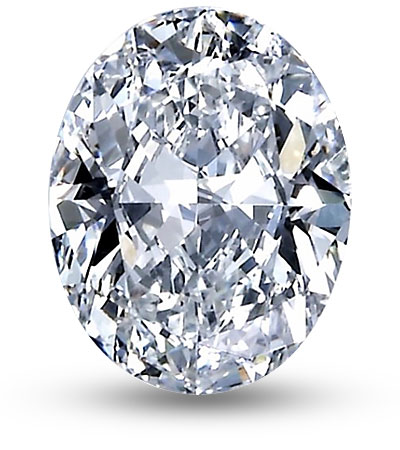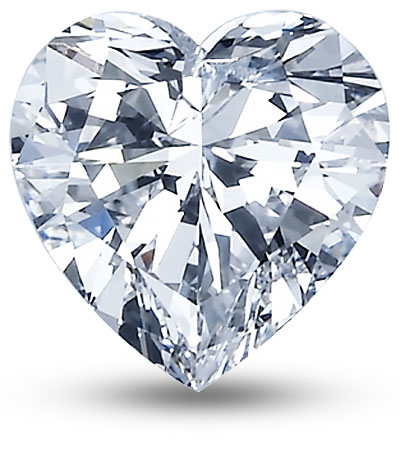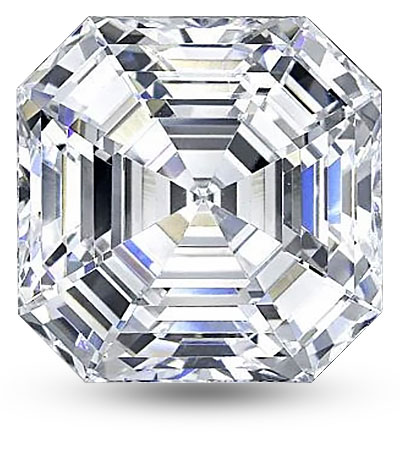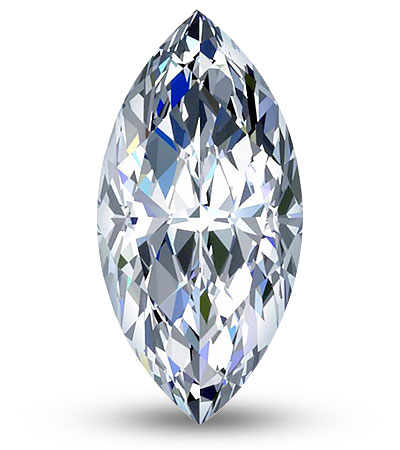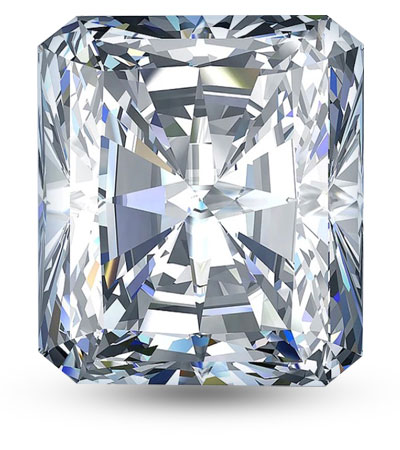Diamonds are forever
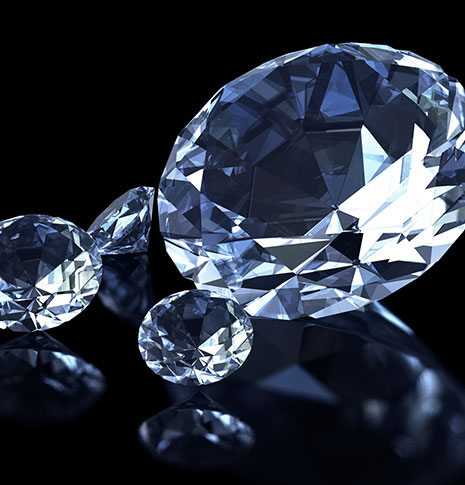
This slogen is known since 1948 and perfectly sums up the our enthusiasm for diamonds and gives explanation how the diamond, the king of gemstones could become the symbol of marriage. This gemstone means endurance, timelessness, beauty and rarity to everyone.
Every diamond is unique, special and unrepeatable. But how do they determine its value? Until the middle of the 20th century there were no standards that could help determine the value of diamonds. Luckily, nowadays there is a universal language which is the perfect measurement of the quality of the diamonds, so diamond buyers know exactly what they are investing in.
The so called 4C determines these characteristics of the stone. We are going to elaborate on that later on. Also, we are going to talk about international gemmology institutes like GA which sets out certificates for bigger gemstones, and covers the given diamond’s characteristics.
According to our profession of faith, diamonds are the perfect choice for wedding and engagement rings.
What is a conflict free diamond?
Most of you must have seen the exciting movie with Leonardo DiCaprio called Blood Diamond. Luckily, nowadays the exploitative mining practice seen in the movie, shrunk to the minimum. Although, the term ‘blood diamond’, or in another words conflicted diamonds, is not used for the sad situation.
Conflict free diamonds are mined in countries where the profit of selling the gemstones does not fund local military organizations or civilian riots.
Naturally everybody thinks about Africa when it comes to diamond mining, but luckily the situation is changing in Africa. Also, there are numerous diamond mines in Russia, Brasil and Australia.
Here in our atelier, our main goal, from the very beginning, is to find materials from the cleanest and most transparent sources. That is why; we have been working with the Hungarian agency of a diamond distributing company from Antwerp for more than 10 years.
Categorizing diamonds according to the 4C standard
Those diamonds which are used as gemstones are valued according to the so called 4C system
– Colour
– Clarity
– Carat
– Cut
The colour of the diamond
Natural diamonds occur in numerous different hues, if this hue is close to colourless, it is considered the most valuable.
There is a worldwide standard when it comes to rating diamond colours, it names the colours from D to Z and shows how colourless the diamond which we picked. The difference between colour values can be so little, that the untrained eye cannot tell them apart.
On the scale, D is the most colourless, therefor the most valuable diamond and Z marks the least valuable gemstone.
For categorizing the colour of diamond, there are so called master stones and gemmologists determine the category of the gemstone with the help of the master stones.
| D-E-F | Colourless diamonds. Most wanted pieces |
| G-H-I-J | Almost colourless diamonds (can contain a little colour) |
| K-L-M | Faint coloured, slightly yellow diamonds. The colour of the K hue diamonds can be seen with the naked eye. |
| N-R | Very lightly coloured, yellowish diamonds. Bright coloured, yellow diamonds |
| S-Z | Bright coloured, yellow diamonds |

The colour of the diamond is influenced by many factors, such as the colour of the noble metal where the stone is set. Colourless diamonds prevails dominantly in white gold settings, yellow diamond are more eye-catching in yellow gold settings.
When it comes to a bigger diamond, its colour gets a bigger role, since the colour of the gemstone can be more visible if it is bigger.
There is a separate classifying system for colourful diamonds from the middle of the 1970’s. The colour of diamonds are of three components, main colour, secondary colour and chroma. A colourful diamond contains 2 or 3 different colours. That is why; there are hundreds of colour combinations may appear.
The colour of the diamond is determined by chemical elements like nitrogen, chrome, boron infiltrated into the stone’s crystal structure. Also, the deformity of the crystal-lattice may result in colour change.
There are 12 main diamond colours; these are yellow, pink, blue, green, orange, brown, violet, grey, purple, red, black and steel white. The yellow and brown diamonds are the most common colours. Red, green, violet, pink, orange and blue coloured diamonds are very rare, that is why their prices could be much higher than the diamond from D to Z category.
The prices of the coloured diamonds are influenced by how rare they appear and how intense their colours are. There are natural coloured diamonds and heat treated diamonds as well.
The Clarity of the Diamond
The diamond just like any other natural crystal contains small inclusions which cannot be seen with the naked eye. The size, number and location of these inclusions influence the quality of the diamond.
If the inclusion is less visible in the chosen gemstone, it is clearer and more light can travel through it. The cut of the diamond is very important as well. Some cuts require higher quality than others (Asscher cut diamond)
Diamond experts often refer to these inclusions as a unique characteristic of the given stone because these traits give the uniqueness of the gemstone.
To indentify the clarity of the diamond we need a-ten-time magnifier. The international classification grades them from F (flawless) to I3 (included).

| F1 | IF | VVS1-VVS2 |
| Flawless | Internally Flawless | Very Very Slightly Included |
| Under a ten time magnifier there are no visible spot or inclusions on the surface of the diamonds neither on the inside. | Under a ten time magnifier there is a little flaw on the surface. No inclusions inside the stone. | Inclusions are invisible to the naked eye and are similar with the ones in higher categories. Under a ten time magnifier it is very hard to notice even for experts. |
| Extremely rare, primarily smaller diamonds. | Extremely rare diamonds. The small surface flaws do not influence the sparkle of the diamond. It can be erased by polishing with a minimal weight loss. | The sparkle of the diamond is not influenced by the inclusion. |
| VS1-VS2 | SI1-SI2 | I2-I3-I4 |
| Very small included | Small Included | Included |
| They have small, faint inclusions, they can only be observed under a 10 time magnifier by professionals. | Cannot be seen with the naked eye, they have faint inclusions, can be observed under a 10 time magnifier by professionals. | Contains inclusions, they are easily observable under a 10 times magnifier, also they can be seen with the naked eye. |
| Very clear diamonds. | When it comes to SI2, after thorough investigation, rarely, the inclusions can be seen with the naked eye. | The inclusions might influence the diamond’s brilliance and transparency and can also weaken the durability of the diamond. |
Carat
Apart from colour there is a very important factor that define the value of the diamond its weight, the carat.
When it comes to diamonds, weight is defined with extreme precision. The unit of measurement is carat, ct for short. The etymology of carat is from St John’s bread’s seed (carob) which has a rather constant weight and that is why merchants used it to measure the weight of pearls, precious stones and diamonds. Carat is 1/5 of a gramm, 1 carat is 0,2gr.
A diamond which is less than a carat is defined by points so a 1 carat diamond is 100pts this way decimal values can be avoided. So a 1pt diamond is 0,01ct.

Diamond cut
Diamond’s final beauty and value is gained by the perfect cut, so it can be gemstone of an exquisite jewel. The perfect cut ensures the diamond’s unique optical appearance.
- The brilliance means the internal and external lights which are mirrored back. Among translucid gemstones diamond has the highest brilliance.
- The fire (beam) is one of the most unique characteristic of a cut diamond, the mirroring is divided to the colours of the rainbow.
- The sparkle ( scintillation) appears during the movement of the stone or when the light comes from another direction.
Since diamond is the hardest known material on Earth, it can only be fashioned with itself, with diamond powered grindstone.

What is a brilliant?

The two main cutting technique when it comes to gemstones is the cabochon (a contiguous arched surface), and the faceted cutting technique which means they create planes.
For labouring the diamond the faceted cutting is the most suitable. The facets make it possible for the stone reflect the life into many different directions. One of the types faceted cutting is brilliant cut which is a round form and consist of 57 facets.
In the case of the ideal, well-cut brilliant 100% of the incoming light reflects back through the crown facets of the diamond. This way it results in beaming sparkle. Diamond is the most popular gemstone for engagement rings.
With antique cut diamonds 58 facets is the typical. Instead of a pointy bottom part, they cut a flat shape, it is called the culet.
Which are the most popular diamond cutting shapes in the world?
| Cutting types | Characteristics |
| Brilliant
|
This cut is the most popular which is no accident. This 57 faceted cutting method brings the most out the diamond when it comes to glittering and light reflecting. The brilliant cut is a round cut form. |
| Princess
|
Square shaped from with many sides with sharp, pointy and uncut corners. It is the most popular decorated diamond shape especially with engagement rings. It is characterized by an intense glimmer and it goes well with numerous engagement ring styles. It looks marvellous on a longer hand shape with slim fingers. |
| Oval
|
An elegant and unique choice for someone, who does not wish to draw too much attention on herself. Its wearer is a dreamer a romantic type of person who likes the traditional style but wishes to express her personality. When it comes to purchasing this type of cut, one must pay attention to proportion. It makes the wearer’s finger optically slimmer, therefor it is a great choice for someone with a smaller hand. |
| Emerald
|
Rectangular shape with ladder- like facets. This type of cut shows the most of the inclusions, that is why it requires a higher quality stone. It is an extremely elegant, charming shape which looks great in vintage rings. |
| Drop or Pear
|
It can symbolize the teardrop of joy. If the pointy end of it looks to the direction of the fingers it can give the illusion of longer hands and fingers. |
| Heart
|
The universal symbol of love, one of the rarest diamond shapes, purchasing it needs careful consideration. It requires a bigger carat weight. It is important the stone is perfectly symmetrical. |
| Cushion
|
Rectangular shape with rounded corners. It is a very diverse style which goes well with traditional, vintage rings and with modern ones as well. An elegant and sophisticated look with a very a romantic effect. |
| Asscher
|
Rectangular shape with dropping corners and tiered cut. A dramatic yet elegant look. Its wearer is a really modern personality who is nostalgic and fond of antiques. |
| Marquise
|
Pointy, long shape with nicely cut ends. Elegant style, which make fingers look longer and thinner. It is a great choice for those who like to stand out from the crowd. With this cut it is essential for it to be symmetrical. |
| Radiant
|
Rectangular shape with cut corners. A modern and sophisticated look. It shows great brilliance and fire. It hides the stone’s inclusions very well. |
The most popular diamond cut shapes in Hungary
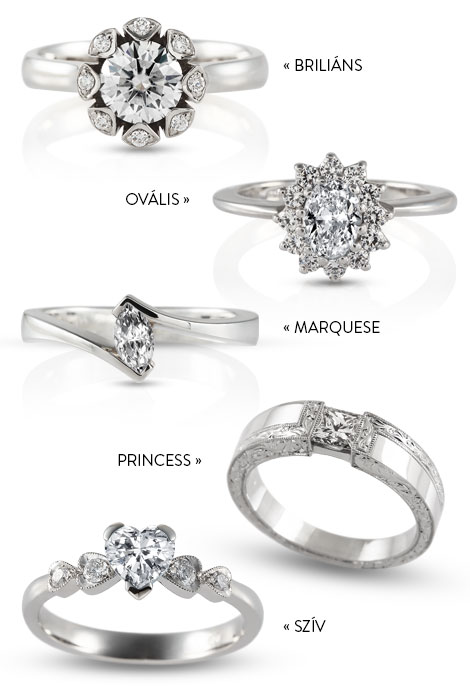
Like everywhere else in the world, the following cuts are the most popular ones in Hungary. The brilliant, princess, oval, heart and marquise.
Fundamentally this has economic reasons since the other cut types are used for bigger over a carat stones. Their cost could reach the price of a decent car.
These types of diamonds are out of reach in western countries as well. Only the elite can afford diamonds like these.
We would like to recommend some of our jewels with these popular diamond cut styles.
Brilliant Cut Diamond:
Dandelion engagement ring
Oval Cut Dimaond:
Diana engagement ring
Princess Cut Diamond:
Barones no2 engagement ring
Marquese Cut Diamond:
Navett engagement ring
Heart Cut Diamond:
Amour Diamond engagement ring
Keeping diamond jewellery clean

Most importantly one most pay attention not to smudge the jewel. We can achieve this by taking off the ring when we do something that may contaminate the jewel. And what are these activities? For example, most of the house chores. During the course of making food our hand are getting dirty involuntarily and our rings as well. Especially when it comes to forming a dough.
Apart from the mentioned above, it is highly recommended to take off ring when washing hands. On the one hand it is easier to wash hand more thoroughly if the ring is removed. On the other hand soap could reach parts of ring from where the contamination cannot be removed at home. This way the beautiful gemstone may seem matt and lightless.
When we wear our jewellery for a longer period of time, one must pay attention to store them properly. For this purpose, we offer an exclusive wooden jewellery box alongside a textile pouch. This textile pouch is great for travelling; they can be easily put into a bag or a purse so they do not get scratched.
There are many DIY methods on the internet in connection with cleaning jewellery and we do not recommend any of them. We only suggest our client to use a gold cleaning liquid when it comes to cleaning jewellery at home. The jewels have to be dipped into the liquid for a specific amount of time but the perfect result is not guaranteed.
The professional cleaning method for cleaning jewels if it is trusted with a professional, only they have the necessary craftsmanship and tools.
Jewels that are made in our atelier, we polish and clean them according to our client’s wishes.
What are the best alternatives for diamonds?
Diamond is not the cheapest gemstone which can be set into a jewellery. The question is that is there another gemstone which is very similar in characteristics to diamonds and its price is favourable.
Luckily, our answer is yes. We would like to recommend some affordable alternatives.
Let us list the diamond alternatives sequentially from the cheapest to the most expensive one.
Cubic Zirconia
This is the number one option which comes to everyone’s mind when it comes to diamond alternatives. First of all let us explain the stone’s characteristics. Cubic zirconia is and artificially made product, its manufacturing is fairly cheap, it is used for bijous and silver jewellery. Cubic zirconia is not similar to the zircon gemstone which is a natural crystal and can appear in numerous colours in nature.
The greatest disadvantage of cubic zirconia is its softness, therefore they are not the best choice for everyday usage. After 2-3 years of intense usage they deteriorate badly.
Here in our Atelier we do not work with cubic zirconia because we cannot guarantee its long term durability.
White Sapphire
White sapphire is a beautiful and rather uncostly choice. White sapphire is the most affordable compared to the blue or ping ones and other natural colours, but its fire, brilliance and overall appearance cannot be compared to diamonds. This gemstone is definitely more modest and unclear than diamonds. They have a less glamorous personality than diamonds but sometimes they chosen for this very reason.
Moissanite
Here in our Atelier, this is the alternative we believe in the most. Its price is lower than other artificial diamonds and some of the characteristics of this gemstone is even better than real diamonds.
You can learn more about Moissanites here.
Artificial Diamonds
Manufacturing artificial diamonds has been an interesting topic for a long time in jewellery industry. Nowadays there are many great solutions for these kinds of stones. First and foremost we would like to mention Swarovski whose polishing quality and professionalism is well-known. Many believe that artificial diamond’s biggest advantage in contrast with natural diamonds that environmental damages can be eliminated.
The artificial diamonds manufactured by Swarovski is of the greatest quality; the only problem is that their prices are very close to natural diamonds.



